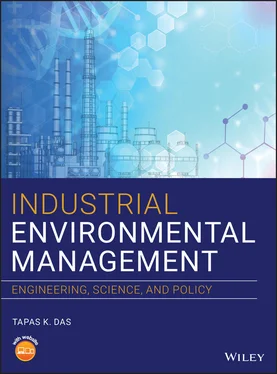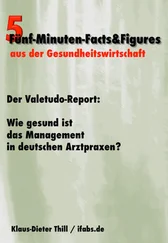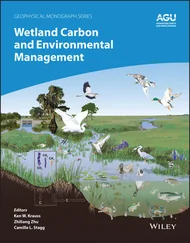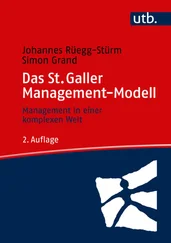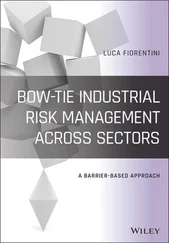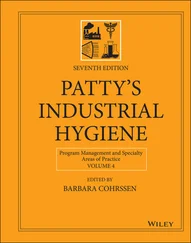9 4 Industrial Wastewater, Air Pollution, and Solid and Hazardous Wastes4.1 Introduction 4.2 Industrial Process Water 4.3 Common Elements, Radicals, and Chemicals in Water Analysis 4.4 Purposes and Objectives for Inspecting and Sampling 4.5 Sampling and QA/QC Plan 4.6 Whole Effluent Toxicity Testing 4.7 Flow Measurements 4.8 The Point of Compliance with the Water Quality Standards 4.9 Water Quality Modeling 4.10 Example NPDES Permits (for Refinery and Aluminum Smelter are shown in Section D.1) 4.11 Air Pollution Perspective 4.12 Prevention of Significant Deterioration (PSD) Permitting Process 4.13 An Overall Permitting Process 4.14 Best Available Control Technology 4.15 Atmospheric Dispersion Modeling 4.16 Dispersion Models: Indoor Concentrations 4.17 State Implementation Plan 4.18 Compliance 4.19 CAA Enforcement Provisions 4.20 Industrial Solid Wastes and Its Management 4.21 Hazardous Waste Landfill (Sequestering, Isolation, etc.) 4.22 Industrial Waste Generation Rates 4.23 Comprehensive Environmental Response, Compensation, and Liability Act and Superfund 4.24 Industrial Waste Management in India: Shifting Gears Problems References
10 5 Assessment and Management of Health and Environmental Risks 5.1 Health Risk Assessment 5.2 Assessing the Risks of Some Common Pollutants 5.3 Ecological Risk Assessment 5.4 Risk Management 5.5 Communicating Information on Environmental and Health Risks 5.6 Environmental Information Access on the Internet 5.7 Health and Occupational Safety 5.8 Industrial Process Safety System Guidelines 5.9 Industrial Hygiene 5.10 Atmospheric Hazards 5.11 Safety Equipment 5.12 Communication Devices 5.13 Noise 5.14 Radiation 5.15 Effects of Global Warming: Climate Change – The World's Health 5.16 Key Vulnerabilities 5.17 Energy Sector Problems References
11 6 Industrial Process Pollution Prevention6.1 Industrial Waste 6.2 What Is Life Cycle Assessment? 6.3 LCA and LCI Software Tools 6.4 Evaluating the Life Cycle Environmental Performance of Chemical‐, Mechanical‐, and Bio‐Pulping Processes 6.5 Evaluating the Life Cycle Environmental Performance of Two Disinfection Technologies 6.6 Case Study: LCA Comparisons of Electricity from Biorenewables and Fossil Fuels 6.7 Best Available Control Technology (for Environmental Remediation) 6.8 BACT: Applications to Gas Turbine Power Plants Problems References
12 7 Economics of Manufacturing Pollution Prevention7.1 Introduction 7.2 Economic Evaluation of Pollution Prevention 7.3 Cost Estimates 7.4 Economic Criteria for Technology Comparisons 7.5 Calculating CF 7.6 From Pollution Control to Profitable Pollution Prevention 7.7 Resource Recovery and Reuse 7.8 Profitable Pollution Prevention in the Metal‐Finishing Industry 7.9 Use of Treated Municipal Wastewater as Power Plant Cooling System Makeup Water: Tertiary Treatment vs. Expanded Chemical Regimen for Recirculating Water Quality Management 7.10 Consequences of Dirty Air: Costs–Benefits 7.11 Some On‐Going Pollution Prevention Technologies 7.12 Cost Indices and Estimating Cost of Equipment 7.13 Waste‐to‐Energy 7.14 Sustainable Economy and the Earth Problems References
13 8 Lean Manufacturing 8.1 Introduction 8.2 Engineering Data Summary and Presentation 8.3 Time Series: Process over Time 8.4 Process Capability 8.5 Lean Manufacturing 8.6 Types of Waste 8.7 Six Sigma in Industry 8.8 Lean Implementation Develops from TPS 8.9 Manufacturing System Characteristics: Process Planning Basics 8.10 Design for Life Cycle 8.11 Sustainable Design and Environmentally Conscious Design and Manufacturing 8.12 Lean Six Sigma 8.13 Six Sigma and Lean Manufacturing 8.14 Cost vs. Quality Analysis 8.15 Assessing and Reducing Risk in Design: Cost to Manufacturer 8.16 The Heart and Soul of the Toyota Way: Lean Processes 8.17 Essential Roles of Industrial Environmental Managers 8.18 Goals of IEMs 8.19 Environmental Compliance and Compliance Assurances 8.20 Waste Reduction Problems References
14 9 Industrial Waste Minimization Methodology9.1 Introduction 9.2 Industrial Ecology 9.3 Water–Energy Nexus 9.4 CE Indicators in Relation to Eco‐Innovation 9.5 Process Intensification and Integration Potential in Manufacturing 9.6 Manufacturing Process Integration 9.7 New Sustainable Chemicals and Energy from Black Liquor Gasification Using Process Integration and Intensification 9.8 Chemical Recovery and Power/Steam Cogeneration at Pulp and Paper Mills 9.9 Conclusions Problems References
15 10 Quality Industrial Environmental Management10.1 Introduction: Industry and the Global Environmental Issues 10.2 Integrating LCA in Sustainable Product Design and Development 10.3 Green Chemistry: The Twelve Principles of Green Chemistry 10.4 The Hannover Principles 10.5 Sustainable Industries and Business 10.6 Six Essential Characteristics 10.7 Social Services 10.8 Environmental Regulatory Law: Command and Control Market Based, and Reflexive 10.9 Business Ethics 10.10 International Issues 10.11 Ethical Sustainability 10.12 Social Sustainability 10.13 Conclusions 10.14 Strategy for Corporate Sustainability Problems References
16 Appendix A: Conversion Factors
17 Appendix B: International Environmental Law Reference
18 Appendix C: Air Pollutant Emission Factors Reference
19 Appendix D: Frequently Asked Questions and Answers D.1 Example Chain‐of‐Custody form for Use by POTWs D.2 Water Quality Models D.3 Frequently Asked Questions D.4 Answers to Frequently Asked Questions D.5 Dispersion Model Development and Application D.6 Hazardous Waste Manifest References
20 Appendix E: Industrial Hygiene Outlines Reference
21 Appendix F: Environmental Cost‐Benefit
22 Appendix G: Resource RecoveryG.1 Description of the Facility
23 Appendix H: The Hannover Principles Reference
24 Appendix I: Environmental Goals and Business Goals Are Not Two Distinct Goal Sets
25 Appendix J: Sample Codes of Ethics and GuidelinesJ.1 National Society of Professional Engineers Reference
26 Index
27 End User License Agreement
1 Chapter 2 Table 2.1 Summary table for selected environmental laws.
2 Chapter 3 Table 3.1 Unpleasant odors in some industries. Table 3.2 Substances present in industrial effluents. Table 3.3 Comparative strengths of industrial wastewaters for conventional po... Table 3.4 Examples of industrial wastewater concentrations for nonconventiona... Table 3.5 General pollution of wet process for starch producing. Table 3.6 Potato processing wastes. Table 3.7 The gaseous composition of unpolluted air (dry basis). Table 3.8 Criteria air pollutants. Table 3.9 National ambient air quality standards for criteria pollutants. Table 3.10 Summary of National Emission Standards for Hazardous Air Pollutant... Table 3.11 Average fugitive emission factors from SOCMI afacilities – refiner... Table 3.12 Acrolein emissions estimated using average emission factors.
3 Chapter 4Table 4.1 Basic information on common elements.Table 4.2 Common radicals found in process water.Table 4.3 Basic information on common use of inorganic chemicals in process wate...Table 4.4 Laboratory analytical methods.Table 4.5 Composite sampling methods: advantages and disadvantages.Table 4.6 NPDES permit limits for a pulp and paper mill's wastewater treatment p...Table 4.7 U.S. emissions of conventional pollutants, 2006 and 2016 (million tons...Table 4.8 Coal‐fired power plant title V/PSD permit emission limits and related ...Table 4.9 List of 28 source categories with a 100 T/Y major source threshold.Table 4.10 Regression equations for dispersion coefficients.Table 4.11 USEPA methods for direct measurements of air emissions and the group ...Table 4.12 Classification of hazardous materials for shipping and packaging.
4 Chapter 5Table 5.1 United States safety, health, and environmental statutes that imply...Table 5.2 Selected physicochemical parameters and bioconcentration factors fo...Table 5.3 Standard parameters for calculation of dosage and intake determined...Table 5.4 Differences between human health and ecological risk assessments.Table 5.5 List of environmental vulnerability factors.Table 5.6 Outrage factors.Table 5.7 Atmospheric constituents.Table 5.8 RMP*Comp inputs.Table 5.9 Population estimates within endpoint circles.Table 5.10 TLVs of some common hazardous compounds.Table 5.11 Safety standards can help in selecting appropriate PPE.Table 5.12 Representative sound pressure levels.
Читать дальше
